Topics
We organise our actions in six thematic & strategic agendas:
Strategic Agendas:
Bio-economy
Circular Construction
Chemicals/Plastics
Manufacturing Industry
Food Chain
Water Cycles
Seven leverages provide additional support:
Leverage effects:
Lever Policy Instruments
Lever Circular Procurement
Lever Communication
Lever Innovation & Entrepreneurship
Lever Financing
Lever Jobs & Skills
Lever Research
What, why and how?
Why are we pursuing a circular economy?
Future visions 2050
How do we see our circular future?
About our management
Who steers what at Flanders Circular?
Coffee Cycle Stories
Coffee Cycle Stories is our mobile coffee bar. But not just your ordinary coffee bar. With Coffee Cycle Stories we tell the story of the circular economy. Over a cup of coffee, freshly made by our barista, we talk about the often surprising reuse opportunities of coffee waste: from beans and husk to coffee grounds. At the bar you can see and feel the circular products made from coffee waste. Coffee Cycle Stories demonstrates that 'residual streams' often are the resources of an entire new economy.
Coffee Cycle Stories is a cooperation between Koffiecafe (the Belgian Royal Association of Coffee Roasters) and Circular Flanders.
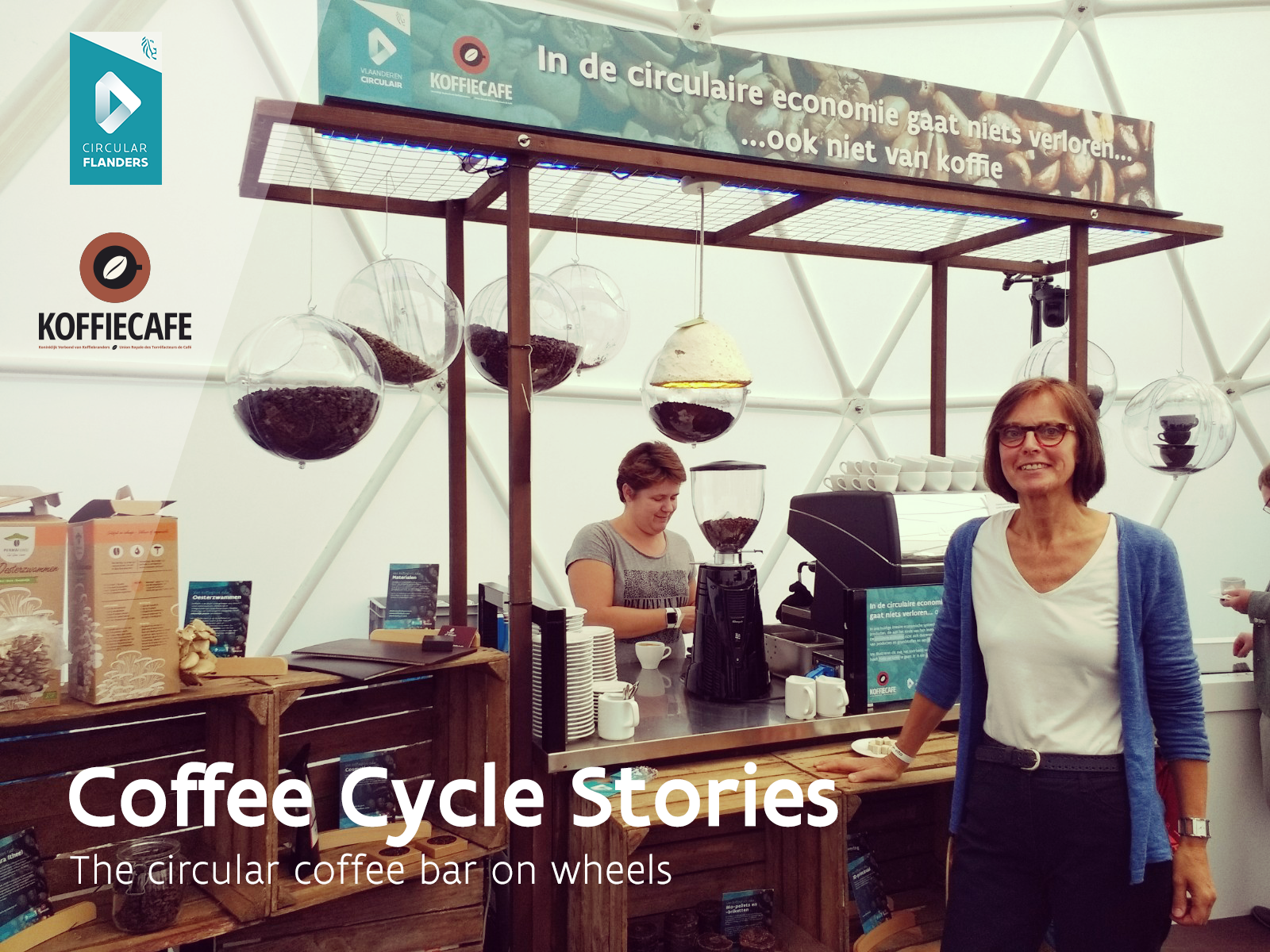
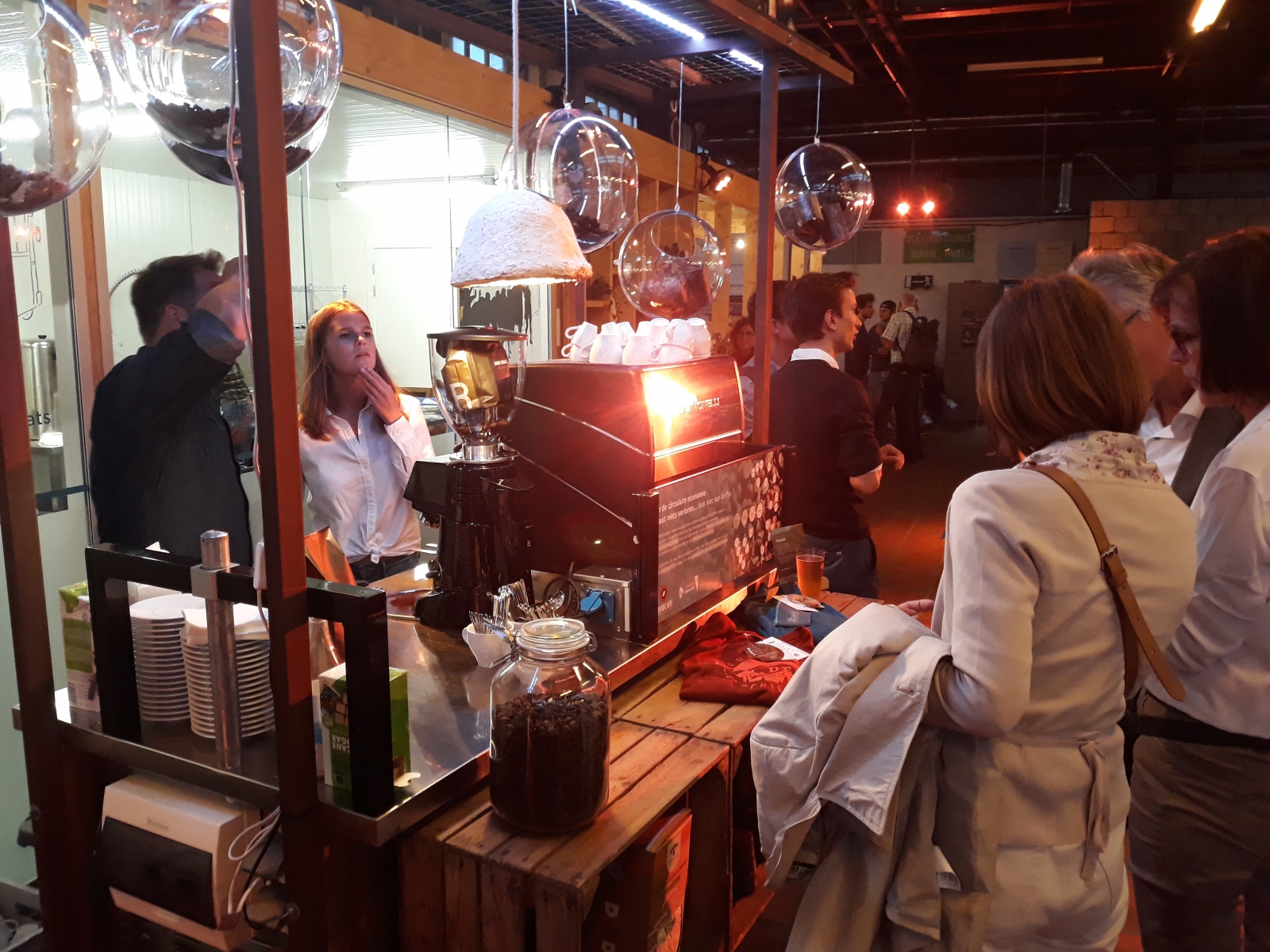
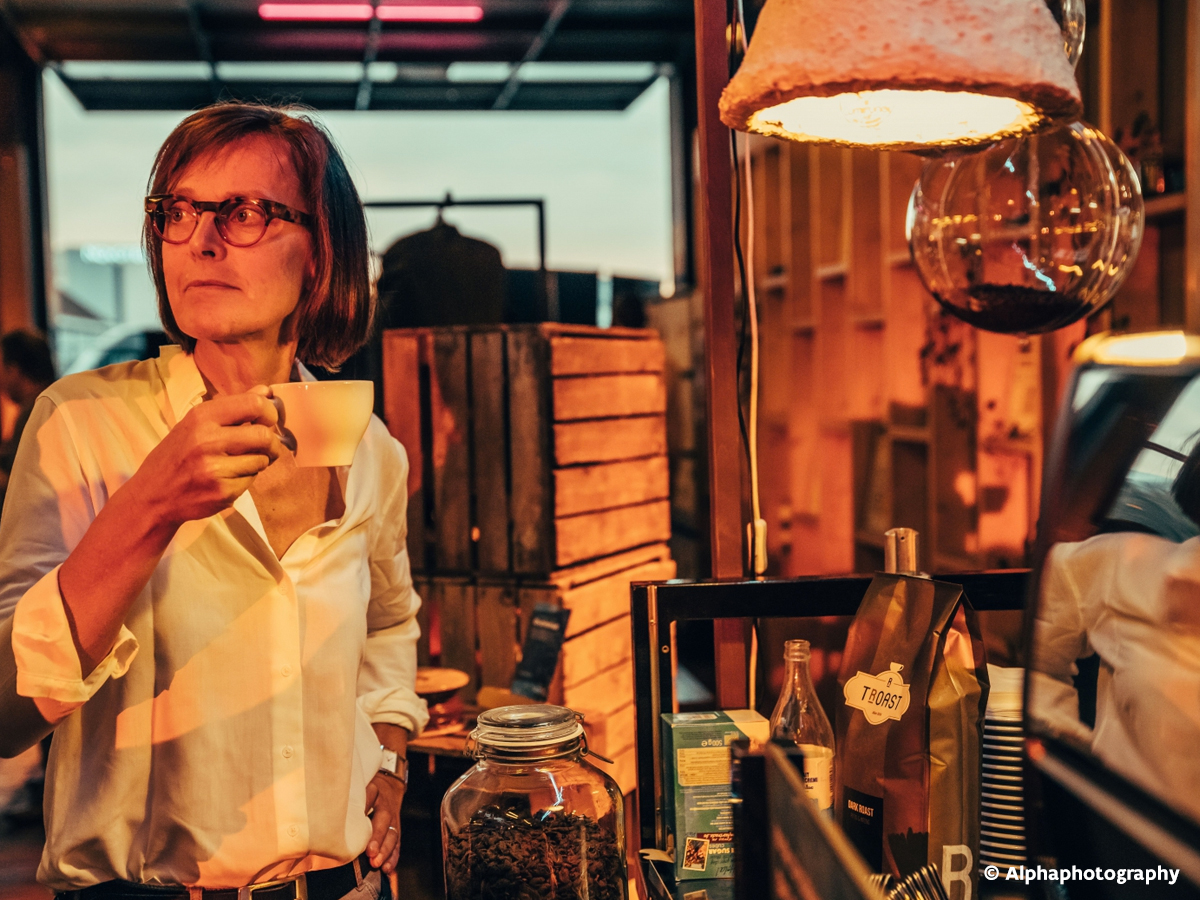
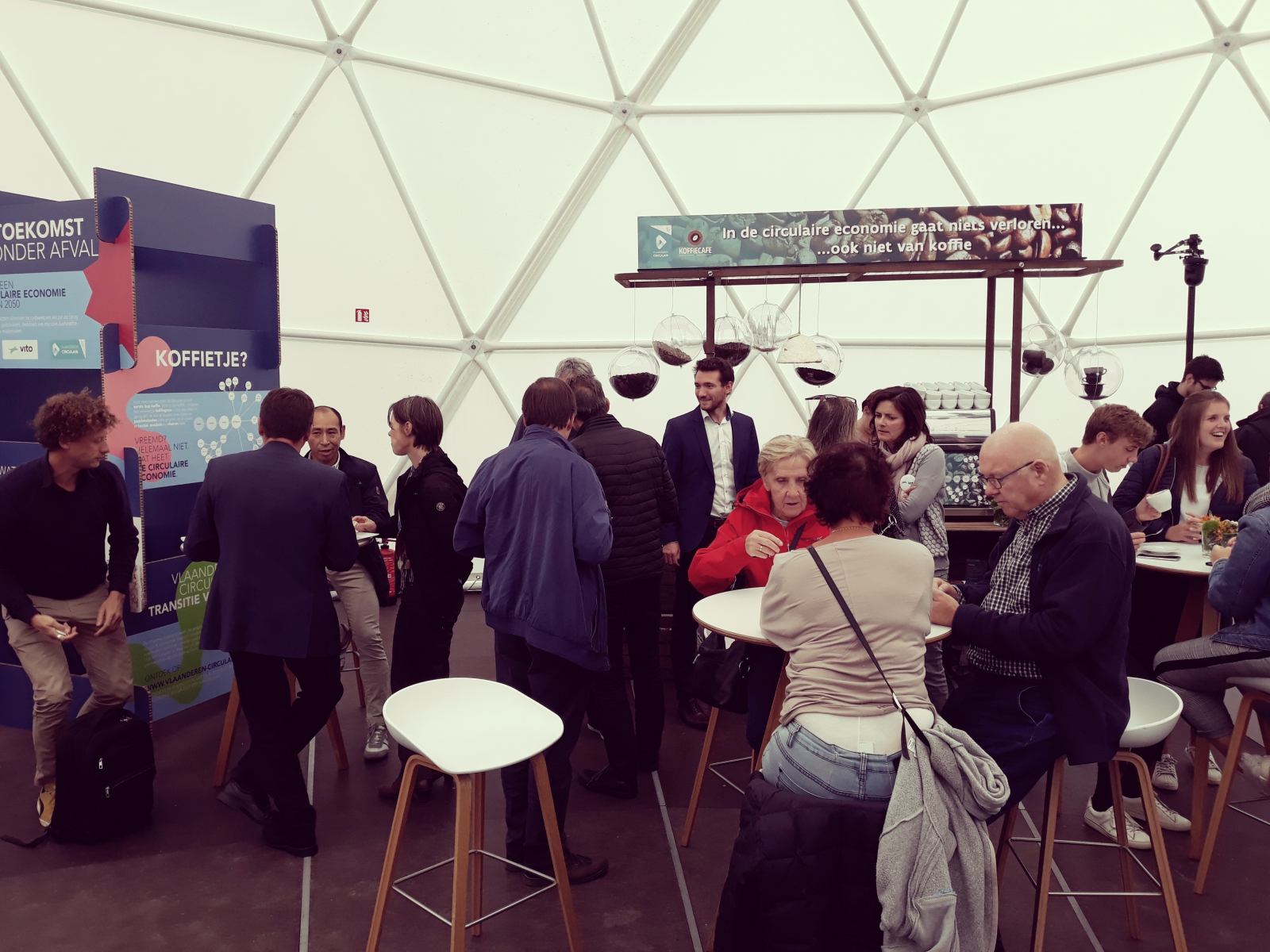
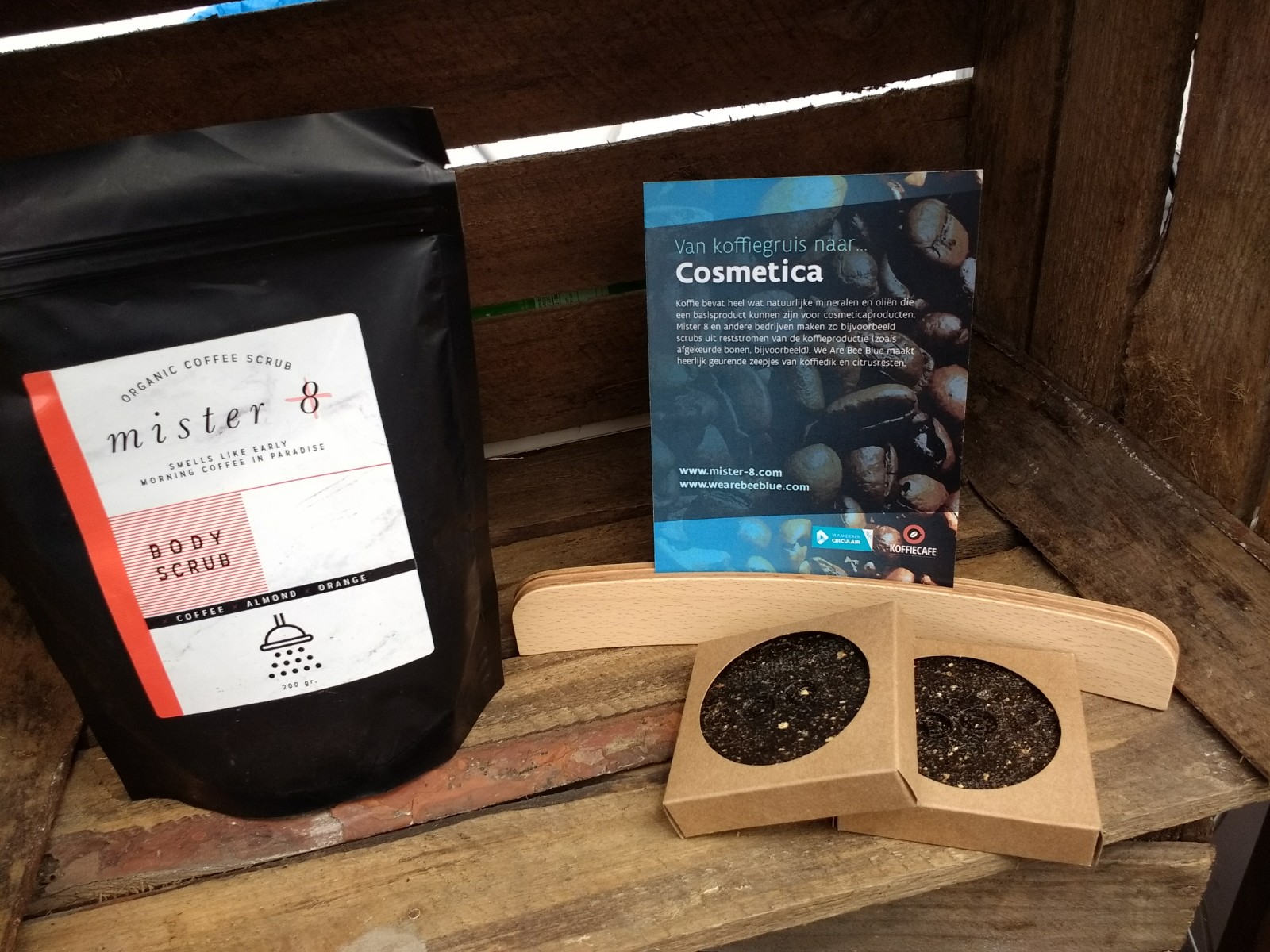
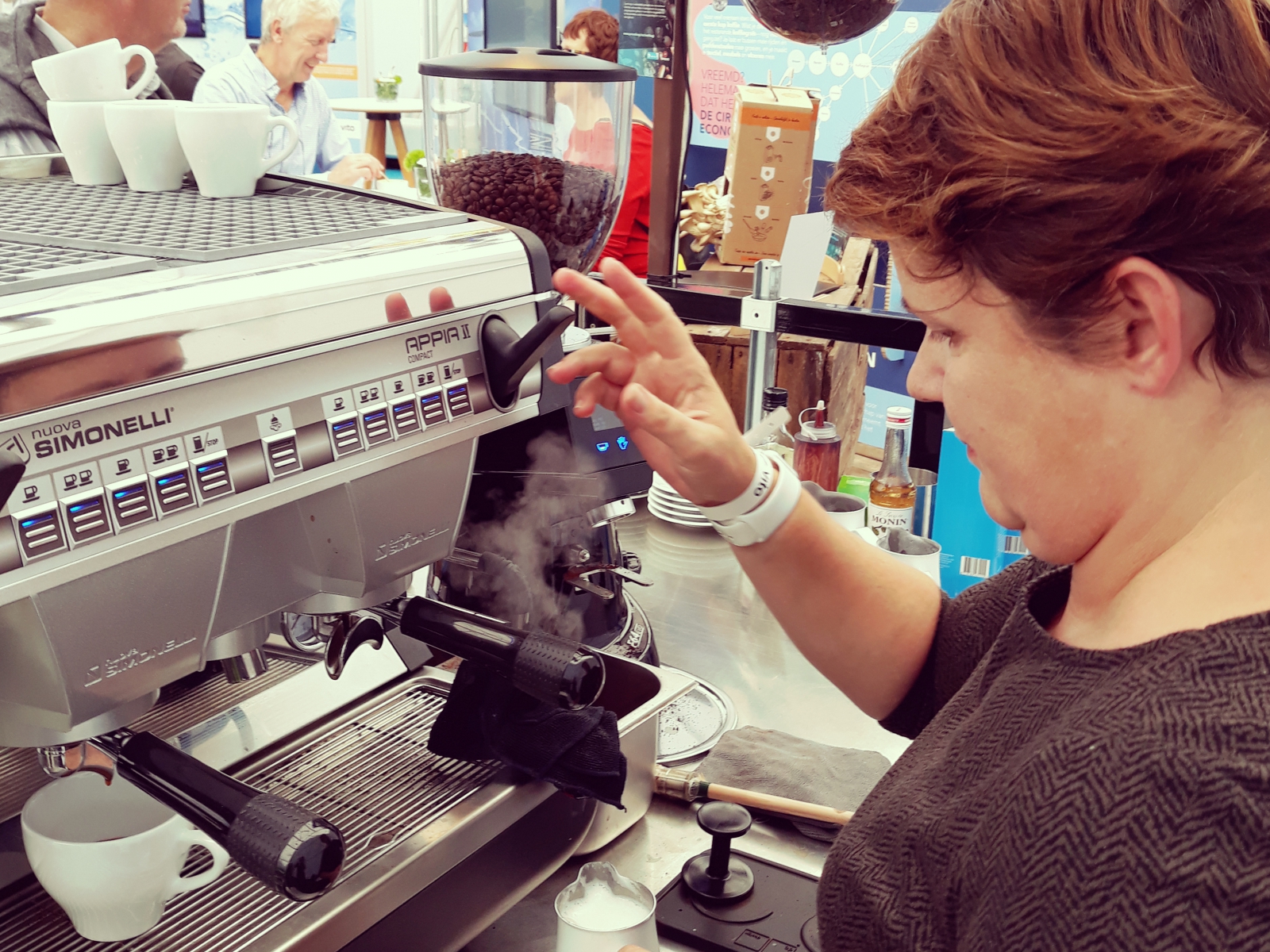
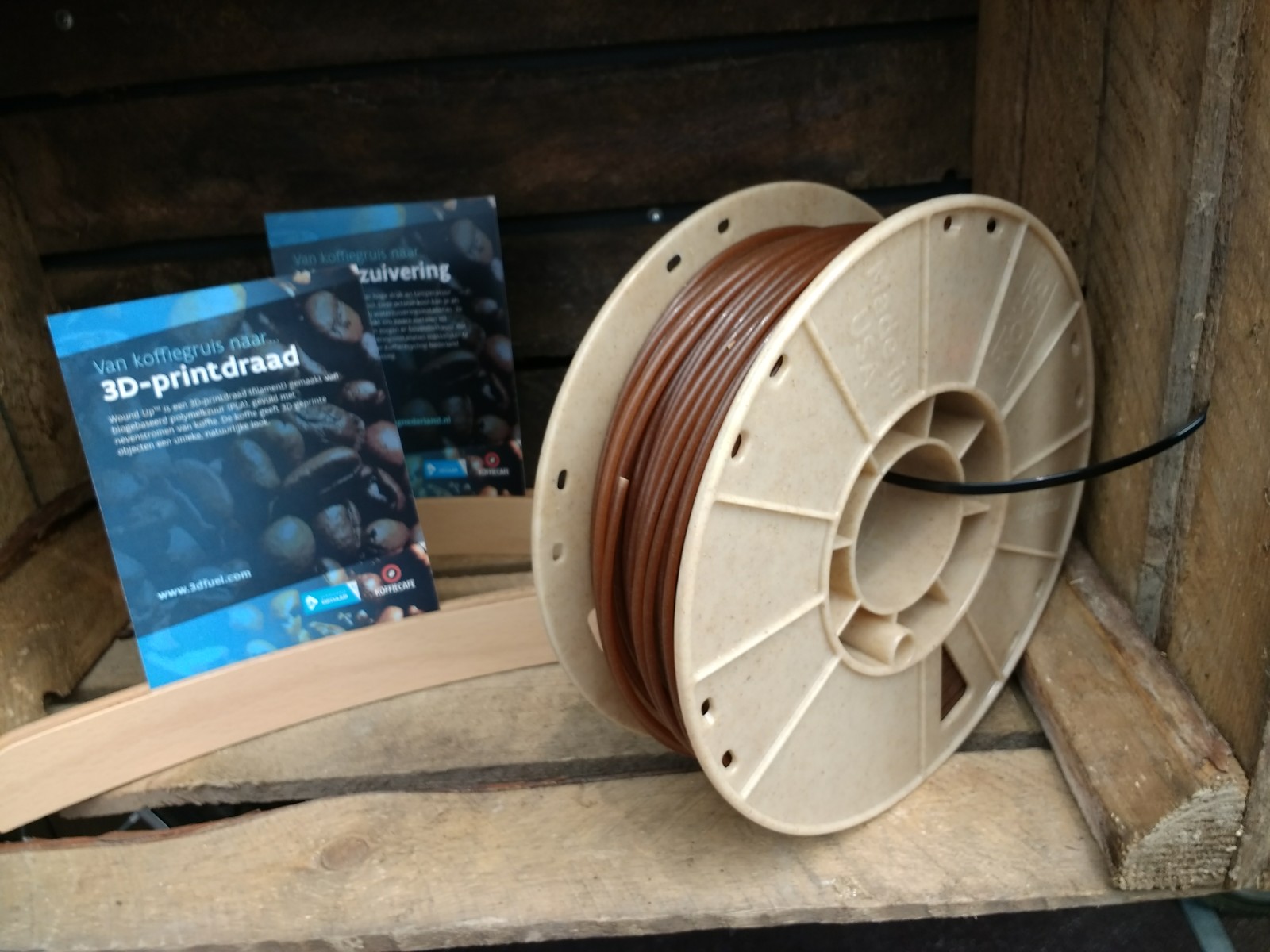
From coffee grounds to…
Oyster mushrooms
Coffee grounds are excellent fertile soil for growing deliciously fresh oyster mushrooms. Mushroom farms like Brussels-based Permafungi merely needed to develop a technology to optimise the natural process. Permafungi collects reclaimed grounds from coffee shops and restaurants, and inoculates them with mycelium, the mass of threads mushrooms sprout from. The mixture is then put into kits for people to grow their own at home, or bagged and shipped to grow rooms throughout the city - mostly unused cellars. As they grow, the oyster mushrooms transform the coffee substrate into champost (from the Dutch champignon, meaning mushroom) which is used to grow chicory.
More info:
From coffee grounds to…
Pellets en -briquettes
Coffee grounds have a high caloric value, which bio-bean recycles into biomass fuel for heating. The grounds are dried, mixed with sawdust and pressed into pellets and briquettes. The combustion of the coffee-based fuel is cleaner and produces less ash than wood pellets. Sourcing locally means lower costs and less carbon emissions compared to fuelwood shipped in (from abroad).
More info:
From coffee grounds to…
3D printing
Wound Up™ is a coffee-filled 3D printing filament. It’s a bio-based polylactic acid (PLA) filled with waste byproducts from coffee. The coffee creates a unique and natural print finish.
More info:
From coffee grounds to…
Building material
Touch of Nature is a brand of plant-based materials developed by the Belgian SME Orineo. Coffee grounds are mixed into a bio-based resin to get a new lease of life as flooring and furniture. The coffee creates a range of luxurious colours and patterns. On average, Touch of Nature floors consist of around 30% coffee.
More info:
From coffee grounds to…
Fabrics
For Singtex, coffee grounds are definitely not waste: they are raw materials to turn into outdoor and activewear branded ‘S.Café’. Singtex sources them from local coffee shops. The grounds are then processed and mixed in with polymer to produce yarn. The result is a fast-drying fabric that provides excellent odour control and UV protection. Through international collaboration in the fashion industry, the fabric is already being used in apparel by big brands like Timberland, The North Face and Puma.
More info:
From coffee grounds to…
Water filtration
Activated carbon is known for its detoxifying properties, but its production from charcoal is an intensive and expensive process. Coffee grounds contain activated carbon too, as well as a host of other components that will bind to heavy metals. Their fine texture makes them well-suited to bind or absorb a host of chemicals. Furthermore, the grounds don’t need to be processed: the hard work has been done by roasting and grinding the beans, and pouring hot water through them when you make your cup of coffee.
More info:
www.koffierecyclingnederland.nl
From coffee grounds to…
Cosmetics
Coffee contains a range of minerals and natural oils which can be used in cosmetics. Companies like Mister 8 turn coffee waste (such as rejected low-quality beans) into cosmetic products like scrubs. We Are Bee Blue makes fragrant soaps from coffee grounds and citrus waste.
More info:
From coffee grounds to…
Lampshades
Lumifungi is a lampshade created by the binding properties of mycelium, the threadlike roots that grow into mushrooms. Companies like Permafungi breed oyster mushrooms on a substrate of coffee grounds. While the mushrooms grow, the substrate turns into ‘champost,’ a fertile mushroom compost. Instead of reusing that compost to grow a second batch of oyster mushrooms, though, Permafungi guides the mycelium along a mould as it grows into a solid mass: into a lampshade, like the Lumifungi, or a wine bottle, … After demoulding and drying, the structure is ready for use. This way, the second life of a traditional waste stream (!) produces bio-based and compostable everyday use products. Triple value in the coffee chain!
More info:
From coffee cherry to…
Coffee cherry tea
Coffee cherry tea or cascara is also known as poor man’s coffee. It’s an infusion of the dried skins and pulp of the coffee cherry, the fruit that contains the coffee bean. It’s typically considered a waste product with no market value. Cascara has a sweet, fruity taste. It’s been around in coffee-producing countries for ages, but it’s made its way to the United States and Britain only in recent years. Now, Europe has discovered the drink too. Because it contains quite a lot of caffeine, it’s sometimes dubbed Mother Nature’s Red Bull.
More info:
From coffee cherry to…
Coffee flour
The coffee cherry -the fruit surrounding the coffee bean- is usually discarded. It gets dumped into rivers or is left to rot in heaps. However, recent research has led to a new appreciation for the cherry: it’s proving a great base ingredient for making gluten-free flour packed with nutrients and proteins. Coffee flour not only holds ecological and nutritional benefits; it also provided coffee farmers with an additional, more stable source of income. The EU still considers coffee flour as a Novelty Food. As such it’s not (yet) approved for use in foods.
More info:
Van koffiehoornschil naar...
Convenient reusable cups
After the beans have been removed from the coffee cherry, they are still surrounded by a parchment skin. This skin has hidden potential as a raw material, which the Australian company Huskee is tapping into. They have made it into the HuskeeCup: a beautifully designed reusable alternative to single-use coffee cups. But their commitment goes even further. They want to build a global community of cafes and coffee drinkers who swap sustainable, reusable cups. HuskeeSwap is the swapping system they’ve launched for takeaway coffee cups. Members hand in their used Huskee Cup at participating coffee shops and get their coffee order in one of the cups that are stacked there. This way, all the cups are collected, washed and brought back into circulation.
More info:
From coffee to…
Fairchain pay-per-cup coffee
Coffee is all about the aroma. And freshness makes all the difference. Nothing beats freshly roasted beans - and they require less packaging than single-serve pods. But not everyone can grind their own coffee at home; espresso machines with a grinder are quite expensive. Moyee Coffee and Bundles, a Dutch company, have come up with a solution. They offer coffee lovers a subscription service. Instead of having to buy your own coffee machine, you pay 0.35 euro per cup of coffee to lease a really good one, and to get fresh batches of beans delivered to your doorstep. Moyee keeps ownership of the coffee machines, and has maintenance and repairs carried out by the machine’s producer. This provides a strong incentive to build high-quality machines, which helps reduce the mountain of low-quality throwaway electronic waste. On top of those ecological credentials, Moyee Coffee is taking Fair-trade one step further: they’re going Fairchain, offering farmers not only a better price for their beans, but organising the roasting process in the country of origin as well. This way, the coffee chain brings more profit and value at the local level. Instead of the usual
15% (with a mere 2% profit), Moyee manages to keep 50% of the value of each cup of coffee in the country of origin.
















